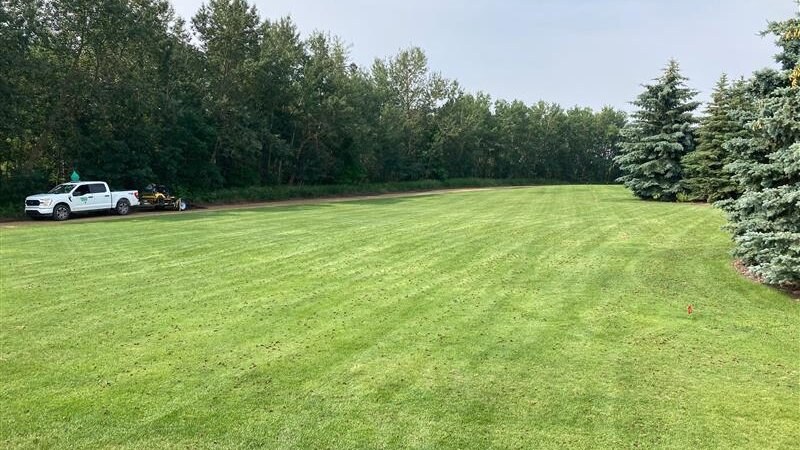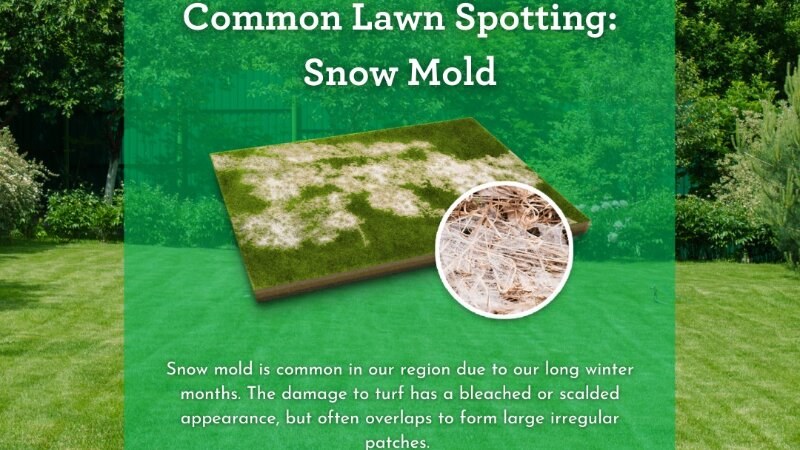9 Lawn Diseases That Could Be Affecting Your Large Yard
Reading time: 5 minutesHave you ever glanced at your lawn and noticed it looking a bit under the weather? From mysterious rings to unsightly patches, lawn diseases can turn your sprawling green oasis into a gardener's nightmare.
With Green Drop's Estate Management service, tackling these problems head-on has never been easier. Our guide to 9 lawn diseases will arm you with the knowledge to identify and deal with them.

The Importance of Lawn Care in Estate Management
Regular lawn care is the cornerstone of estate management, particularly for homeowners with expansive properties. A healthy, well-maintained lawn enhances the aesthetic appeal of your home and contributes to its overall value.
For large properties, the complexity of lawn maintenance makes professional services invaluable. Green Drop specializes in managing the health of your lawn with a team of lawn care experts—our GreenKeepers—equipped with the knowledge and tools to prevent and treat common lawn diseases.

Common Lawn Diseases in Western Canada
You may encounter various lawn diseases that threaten your estate’s lawn. The goal is to understand these diseases, recognize their signs, and know how to prevent or treat them. Here’s a look at 9 of the most common ones.
1. Snow Mould
As winter turns into spring, you may notice your lawn marred by unsightly patches indicative of snow mould. This fungal disease manifests in two ways: grey and pink. They thrive under the protective cover of snow in cold, moist conditions prevalent across Western Canada.
Grey snow mould (Typhula spp.) tends to damage only the grass blades, while pink snow mould (Microdochium nivale) can affect the blades and roots, posing a more severe threat to your lawn’s health.
Signs of infestation include circular patches of dead or discoloured grass that become evident as the snow melts. Prevention is critical here, and that means meticulous cleanup—removing leaves and other debris—to minimize fungal growth.
You should also gently rake the affected areas to facilitate drying. In cases where the disease persists, we may need to apply fungicide to combat fungal spores.

2. Necrotic Ring Spot
Necrotic Ring Spot, caused by the fungus Ophiosphaerella korrae, is noticeable due to its distinctive rings or patches of dead grass. You’ll see this disease on lawns with compacted soil or poor drainage—environments that prevent healthy root growth and water penetration.
You can identify this by its characteristic rings or crescent-shaped patches of withered grass. Lawn aeration can improve oxygen and water flow to the roots, and dethatching and fungicide application may also work.
3. Red Thread
The aptly named Red Thread disease is caused by the fungus Laetisaria fuciformis and manifests as reddish-pink filaments entwining grass blades. It is common when patches of dead grass are left on lawns during wet summers and fall. The good news is that it’s reversible; your grass isn’t completely dead.
Red Thread is more common in lawns lacking nitrogen. Adequate fertilization will promote healthy growth. In addition, you’ll need to aerate compacted soil and boost air circulation to improve moisture and nutrient distribution.
4. Leaf Spot & Melting Out
Leaf Spot and its subsequent phase, Melting Out, is a progression of fungal infection. It starts with small, discoloured spots on grass blades and can lead to significant lawn thinning.
Caused by Bipolaris and Drechslera species, these diseases first manifest as dark spots or blotches on the blades before attacking the crown and root system, leading to "melting out."
Leaf Spot is treated with proper fertilization, avoiding excessive nitrogen in spring, and fungicide treatments when necessary.
5. Powdery Mildew
This one is easy to diagnose. Powdery Mildew is caused by Blumeria graminis that covers grass blades in a white, powdery fungal growth. It thrives in shaded areas with high humidity and poor air circulation. Unlike other lawn diseases that prefer wet soil, Powdery Mildew can spread even on dry surfaces under humid conditions.
You can prevent the growth of Powdery Mildew by pruning overhanging branches to increase sunlight penetration and airflow, selecting disease-resistant grass varieties, and ensuring the lawn is not overcrowded.
6. Dollar Spot
Dollar Spot disease is named for the silver-dollar-sized tan patches it creates. The fungus Sclerotinia homoeocarpa favours moist conditions and can affect various grass types.
You can identify this quickly. You should be able to see small, circular patches in the morning dew. To address this issue, we must ensure balanced fertilization (avoiding excess nitrogen), watering deeply but infrequently to encourage root growth, and mowing to the recommended height for your grass type to reduce stress.
7. Fairy Ring
Fairy Rings, caused by various soil-inhabiting fungi, produce rings or arcs of lush, dark green grass, sometimes accompanied by mushrooms. The rings expand outward as the fungus grows, consuming organic matter in the soil and releasing nitrogen that fertilizes the grass.
While the rings aren’t harmful, they may lead to uneven growth and soil conditions that stress the lawn. To manage this, we’d have to first break up the soil within and around the ring to improve water penetration; then, we’d apply nitrogen fertilizer to even out growth across the lawn. In persistent cases, fungicide applications may be warranted to control the fungal growth.
8. Pythium Blight
Pythium Blight is a fast-acting and potentially devastating disease that presents as water-soaked, greasy spots on the lawn that rapidly turn into large, brown patches. The Pythium spp. fungi thrive in hot, humid conditions, especially when nights are warm and the grass remains wet for extended periods.
Early signs include small, circular spots that quickly merge into more significant areas of dead grass. Our focus would be to improve drainage and air circulation. During this time, we’d avoid watering in the evenings to ensure the grass dries before nightfall. We may also consider fungicide treatment.
9. Fusarium Blight
Fusarium Blight, or Summer Patch, appears as circular patches of dead grass. Caused by the fungus Microdochium nivale, this disease attacks the roots and crowns of your grass, leading to distinctive patches of wilted or dead turf.
We typically treat summer patches with deep, infrequent watering to encourage deep root growth. You can also apply fungicides to protect the lawn from further damage.

Prevention and Treatment of Lawn Diseases with Green Drop
Preventing lawn diseases involves more than just regular upkeep. It's about adopting practices that foster a robust, disease-resistant yard. The key here is a combination of proper watering, mowing, aeration, and fertilization—the foundation of lawn care.
Have a big yard and don’t know how to care for it? At Green Drop, we’re more than just your average lawn care company. Our focus is always to use the safest, most effective treatments to give you a beautiful lawn all year long. And we do that with our comprehensive lawn care packages—book your estimate now!
We’re based in Calgary, Edmonton, Red Deer, Regina, Saskatoon and Winnipeg. With Green Drop, your lawn is in good hands!

